The women are posing, yes. But they are not engaged in a casual flirtation with a man who has persuaded them to return to his studio with him. I am supposing that the ordinariness of their day in a small town in Holland has gotten a bit more interesting. A man – who has approached them in a café – entertains them with his attention. Back in the studio, they’re relaxed. They have already agreed to pose for this Falstaffian figure, this man who lavishes enough attention that he is capable of making them comfortable. Together, they are playful. It is a dance for the camera lens, for the gaze of this man.
But, while the models ease their inhibitions under the spell of this man’s charms, the photographer is enlisting their cooperation into a chronicling of immediate surroundings: The activity in the streets, a detail noticed amid a crowd, a pigeon on the concrete, and a nude in the artist’s studio.
Gerard Petrus Fieret was born on January 19, 1924 in The Hague, Holland’s government center, a sizable city with a current population of about 525,000. At age two, his father abandoned the family and his mother placed him into foster care, where, he later told an interviewer, he was the victim of sexual abuse. During World War Two, as a half-Jew, he was processed through a series of forced labor camps in Germany and occupied France before returning at the end of the war to Holland. After some time bouncing around with menial jobs, he resumed the fine art studies he’d been forced to abandon when the war commenced. At the Royal Academy of Art in The Hague, he received training in graphic arts and life drawing, was apprenticed to a stained glass maker and received lessons in darkroom techniques.
To sustain his artistic pursuits, in the mid-1950s he began dealing in ethnic curios – African masks, Japanese prints, Afghan rugs – a source of income he’d maintain until the 1970s.
In 1965, at the age of 41, he purchased a camera from his local baker. It likely was a Praktiflex, a single lens reflex film camera manufactured in Dresden. He worked tirelessly at his new craft, mounting his first exhibition within months in the lobby of a movie theater, earning him a mention in a local paper.
Around this time, he became emboldened by the work of his fellow Dutchmen Sanne Sannes and Ed van der Elsken, photographers who had discovered the joy of using the camera as a Pied Piper-like inducement, breaking the ice between the male pursuer and female “object of beauty.” The camera in this new age of liberation was enough to attract young women into the studios of freewheeling artists, and their photo language – blurry images, close-ups, shocking angles, askew framings – were usurped by Fieret.
Even this early in his career, Fieret was leading a disordered existence. Though a number of commercial assignments came his way – shooting fashion and dance events – he lived poorly and was forced to move several times, owing either to his studio (a former barracks) being slated for demolition or because his living style proved offensive – he was keeping pigeons in his living space.
But, what to us may present signs of disturbance and bad hygiene, to Fieret was an edge – a liberation free from all constraints, social obligations, technical expectations, aesthetic choices – that fueled his creativity.
The lens doesn’t lie…anymore
Fieret was inclined to pursue a body of work that freed the traditional arrangement between artist and model – and even artists and subject: streetscape, a cat, a still life, etc.
His photos escape from the pretensions of the past – the ideal beauty of Greek statuary as well as the polite or lurid capture of the naked female form. Fieret’s images are a performance between the artist and model, a memory of a connection. Whereas a nude model for Matisse, say, is a subject or an object, for Fieret she is a person, someone with whom he has struck up an acquaintanceship, perhaps for a few hours. The lens doesn’t lie. It is in service to his companionship, his working relationship. All else – the disarry of his life, his erratic personality – is just noise. Model and artist are revealing themselves to each other. We see too.
With many of these images, the entire history of art is preamble. By stepping into the frame, Fieret makes casual what had for centuries been a formal arrangement, an understood positioning. As Jean-Luc Godard around this same time in France was fragmenting our expectations of cinema – as Chaplin, Keaton and Laurel and Hardy had done decades earlier simply by peering into the camera for a moment to break the pretense, to wink at the audience so as to let us into the make-believe – Fieret’s studio antics dissolve traditional expectations.
The women’s bodies may be twisted into poses and the lens may be placed at extreme angles, but there is no mistaking the intimacy of the engagement. The academic rules have been breached as the proscenium is displaced and the audience offered entry. We are present at a candid personal moment, composed with all the rigor of a formal still life. Many of his images seem to be taken without a camera; that is, there is no separation between viewer and subject. Within the frame is a tableaux, a cinematic event implying a sequence of consequences.
Perhaps the entrée into the mise-en-scène, the dismantling of formalities, is the fact that the models are not striking a pose in a solo act of vanity but rather are partners with Fieret in a game. The male is exerting power over the female in enlisting her participation in a provocation, but the casual nature of their partnership – the air of gaiety, the step away from propriety – is as playful as a parlor game.
Fieret’s images escape staid categorization. Let’s not let the matter of this artist’s life get in the way of our appreciation of his work, each image alive with its own vibrancy and connection to our emotions. His unkempt living style can be mere background noise, static, and yet a propulsive catalyst to his elevated artistic achievement. His determination trumps his squalor.
So, the less than pristine quality of the prints is of secondary concern. The tableaux we are witness to are so extraordinary that corroded paper, blurry exposures, images not quite allowed to sit in the developer or fix trays long enough to reach proper exposure…these refinements, ordinarily a requirement of the gallery and museum presentation, are rendered inconsequential. In fact, that Fieret was so careless with his negatives that only one print was made, increases the worth of each individual object. That he sanctified many of his individual images with a rubber stamp, splattering his signature – sometimes multiple times – across the surface of the print means each image is a singular object. There is no edition, no run of prints from a single negative. Each photograph is a singular one-of-a-kind creation.
Fieret certainly was capable of producing a “fine” print, the blacks dark and contrasts sharp, but often the images are gray as they have not been developed or fixed to traditional standards. The arbiters and authorities would command us to devalue the images for their not adhering to academic or market parameters. But, an argument can be made that Fieret’s experiments, as he often called them, are remnants of a blur of chronic artistic activity. Images were snapped so regularly that to keep up with the mechanical necessity of processing the rolls of film, he’d use expired chemicals (likely because they were cheaper to purchase) and fail to bathe the developing paper long enough because his darkroom – such as it was – had little access to water.
But, ultimately, the result is an artistic output that more than distinguishes itself from the mainstream. His calculated, long-term project is to intentionally veer from gallery expectations to forge a new paradigm, one that is in constant motion, one that can’t be contained or supervised. The work is unruly so as to keep pace with the speed Fieret required. He’s like a teenage Rimbaud, an intentional outsider unconvinced of the need to adhere to societal norms. He is not interested in being accepted. Rather, his agenda is to produce art on his own terms, using his own methods, as transgressive, anarchic or “improper” as those might be.
Reputation
In the final years of his life, he was regularly sighted in town bicycling to around 30 spots with two buckets of birdseed hanging from the handlebars to feed pigeons. Most neighbors were unaware that this man was recognized in 1992 with the Ouborg Prize, awarded bi-annually by the municipality of The Hague (4,000 euros, a publication and an exhibition in the municipal museum). It’s reported that he used the prize money to purchase two years’ worth of birdseed.
His artistic reputation improved, however. He was the cover subject of the Feb. 2004 issue of Art and Auction and later that year his 80th birthday was celebrated with a major retrospective at the Photography Museum in The Hague (Fotomuseum Den Haag). He had already had several museum and gallery shows throughout Europe and America, including shows in New York in 1996 at Robert Mann Gallery and at Deborah Bell Photographs in 2003 and 2004-5.
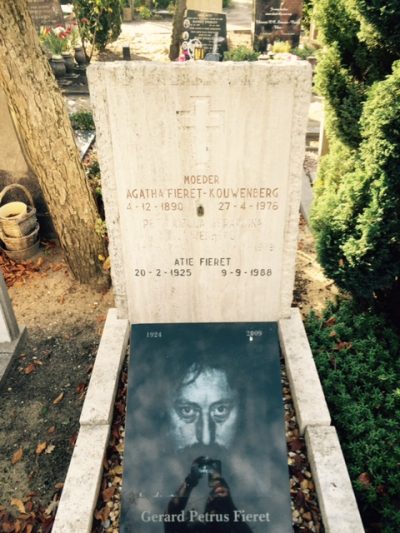
But in his final years, despite the gain in attention to his work, his living condition deteriorated. In the 1980s and 1990s, he was living – along with a number of pigeons and mice – in an abandoned garage formerly used by the city’s sanitation department. Spurred by neighbors’ complaints about the stench, with the assistance of some friends, in 1997 the city council granted Fieret the use of a mobile home north of the city where he managed for awhile, but increasingly feeble he was eventually admitted to a nursing home back in The Hague, where he died, aged 85, on Jan. 22, 2009. He is buried in The Hague’s resting place for “common folk,” St. Barbara Cemetery, in the northeastern part of town.
His work, meantime, continues to gain accolades and prices have been steadily climbing – into the five figures on the American market. Solo shows were mounted in 2009 in Amsterdam and Haarlem in The Netherlands, and in New York at Deborah Bell Photographs in 2007, 2010 and 2015. A major exhibition was held at Le Bal in Paris (May 17 – Aug. 31, 2016), and then was installed from January to April in 2017 at the Centro Italiano per la Fotografia in Turin, and then in May 2017 was installed in the Fotomuseum Den Haag in the Netherlands. In 2018, solo exhibitions of Fieret’s work were mounted at the Gallery Julian Sander in Cologne, Germany, and at Gallery Fifty One in Antwerp, Belgium. Solo exhibits of Fieret’s work also have been mounted at the Kahmann Gallery in Amsterdam, which has also shown him at Photo London and Paris Photo, and the gallery continues to represent him in the Netherlands.
Photographs by Gerard Petrus Fieret copyright The Estate of Gerard Fieret c/o Gemeentemuseum Den Haag/Courtesy Deborah Bell Photographs, New York & Paul M. Hertzmann, Inc., San Francisco.
Photograph of Fieret’s cemetery plot at St. Barbara Cemetery, The Hague, by Ben Kruijf.
–Greg Masters
Essays Photographs
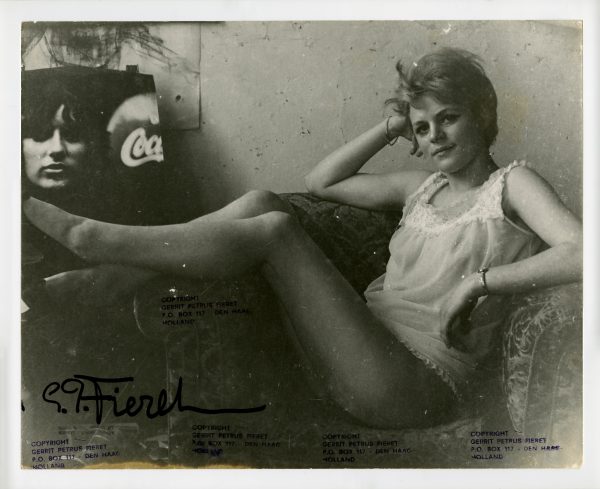
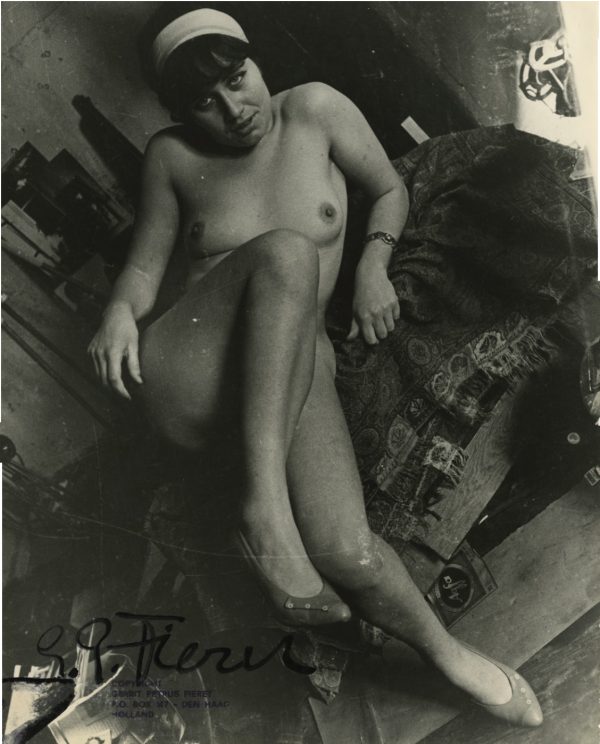
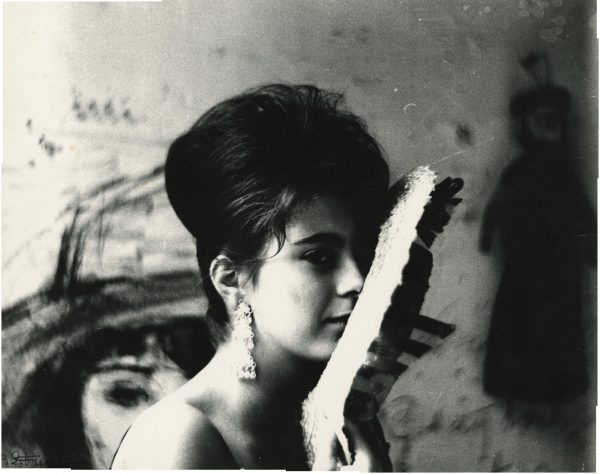
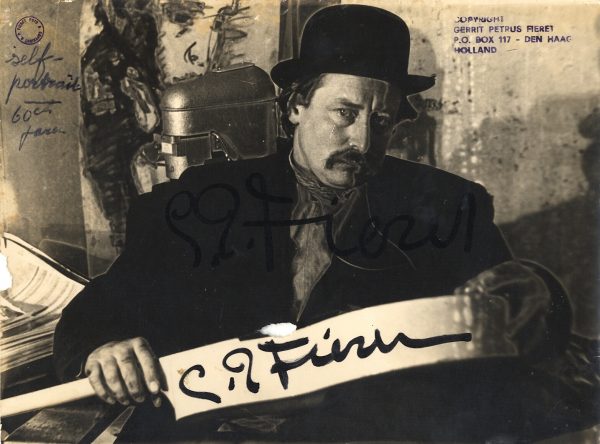
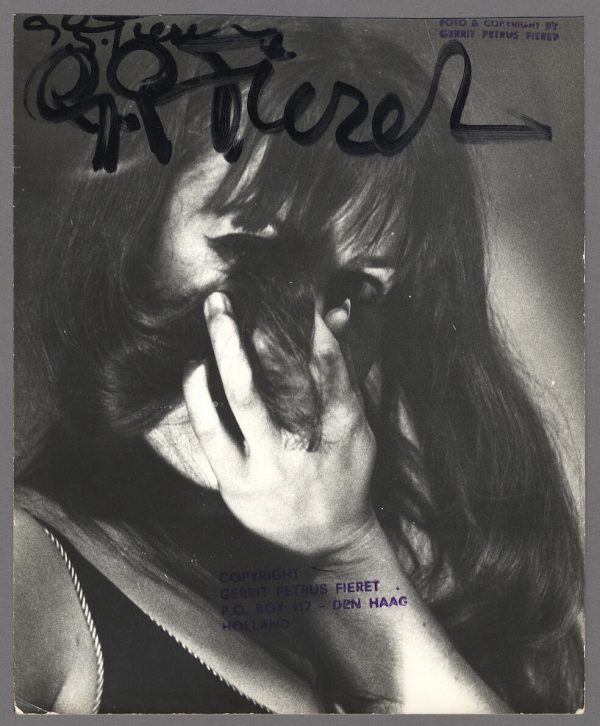
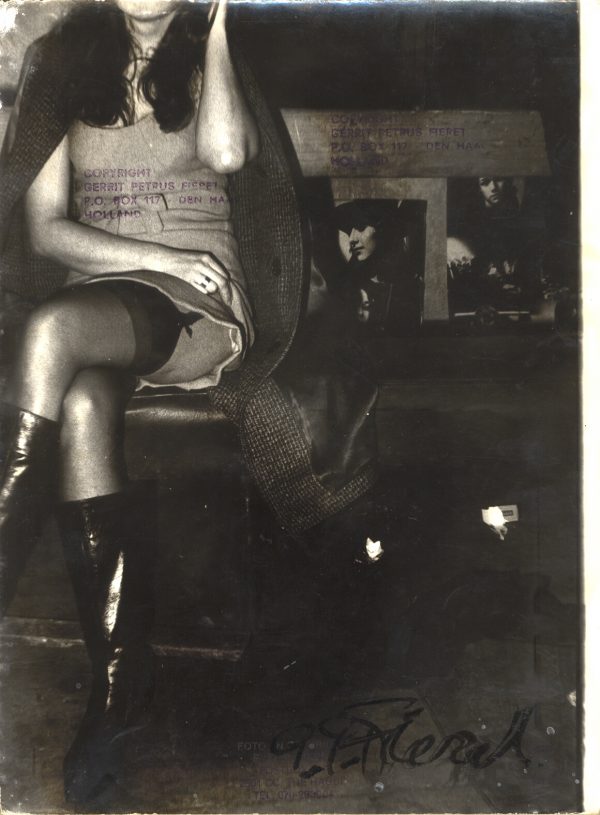
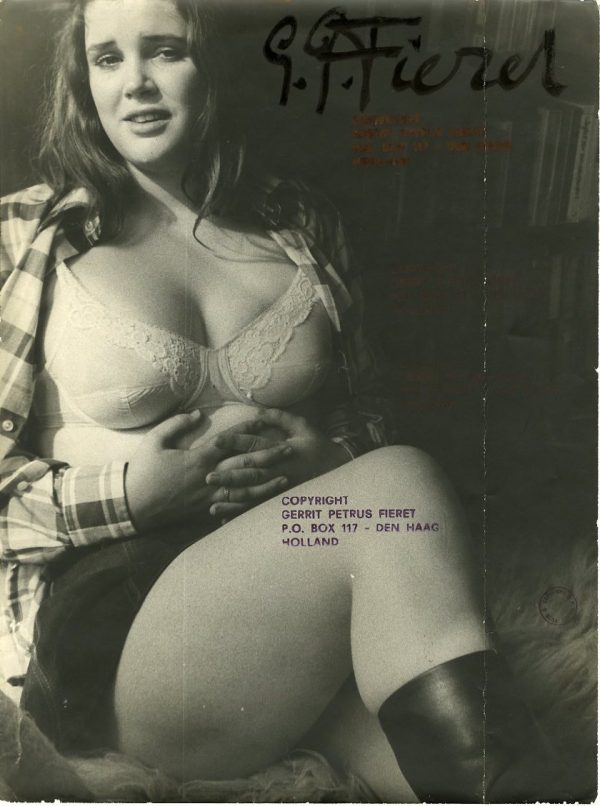
Fascinating. I was unaware of this photographer… but the article is so interesting, it really painted an incredible picture of an incredible artist.
Thank you, Moni. Pleased to receive your feedback and pleased my article piqued your interest in Fieret.